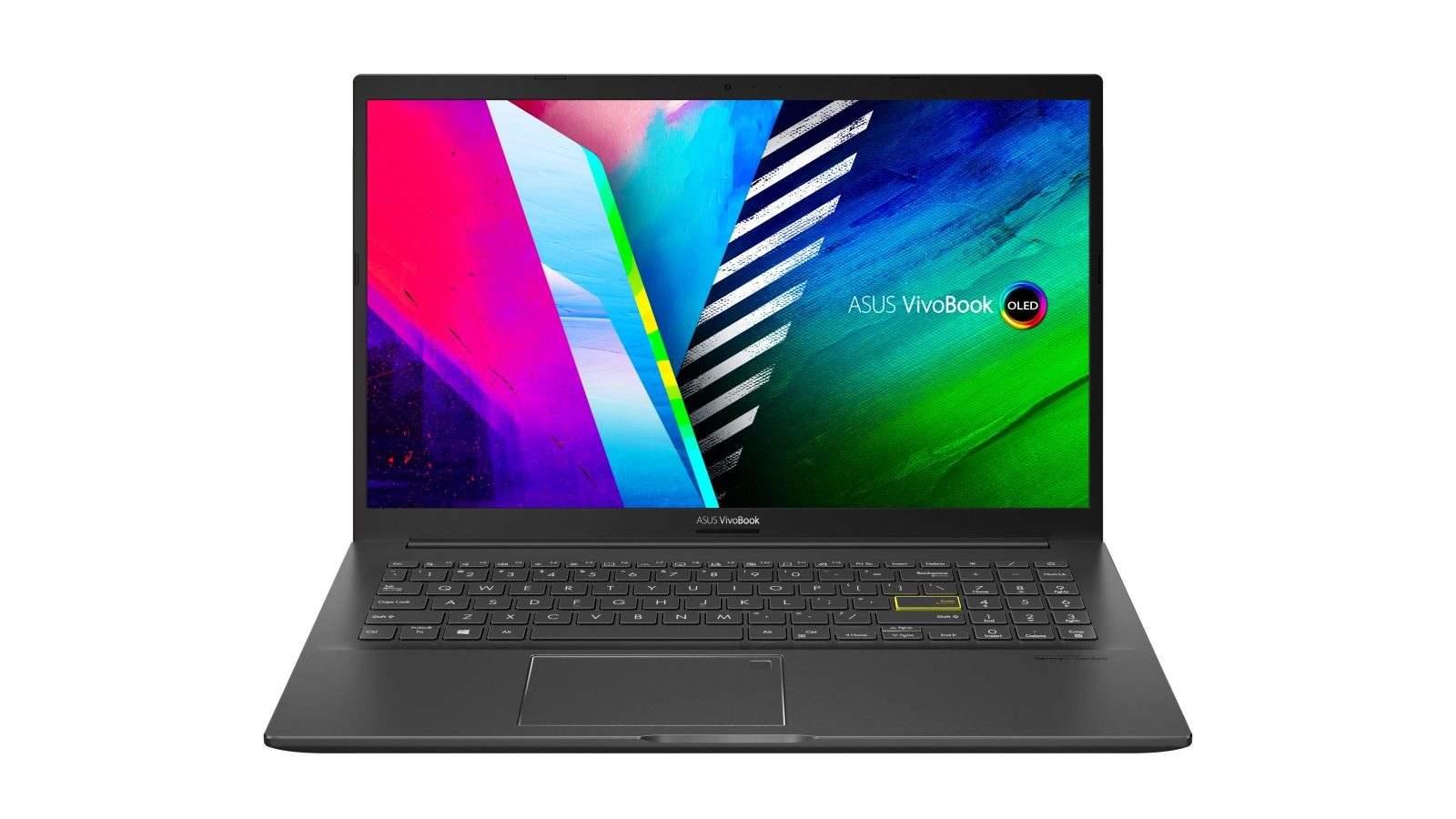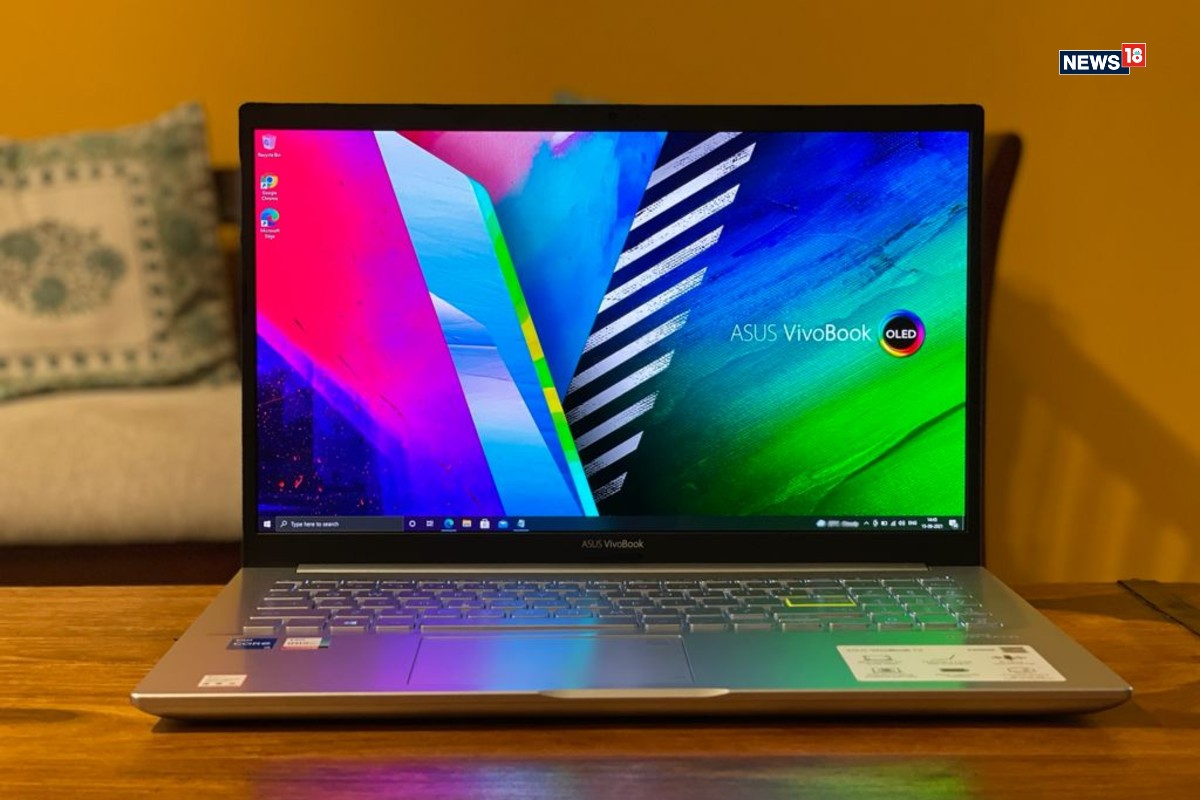Asus VivoBook 15 K513 OLED Review: Can Just a Display Upgrade Make a Laptop Great?
The everyday work laptop has made clear progress in recent times. Talk about build quality, and you no longer get dull, boxy contraptions that weigh a ton. On the performance front, both Intel and AMD have made sure that basic laptops too do not die down to crawling speed within months. SSDs have upgraded the stability of storage media and improved boot times, and on overall terms, it’s safe to say that you get plenty of dough for your money. The Asus VivoBook 15 OLED K513 now seeks to upgrade the budget laptop display as well.
To be specific, Asus’ idea of an upgrade is to put an OLED display on the laptop, and pair it with acceptable specs. Typically, OLED panels have only been reserved for the most premium and expensive laptops, and that’s not just for laptops — even smartphones today feature OLED screens at the top of the product lines. With the Asus VivoBook 15 OLED K513, mainstream laptop buyers get a shot to own a crisp display with high contrasts, clean whites and deep blacks — all without breaking the bank.
Key specifications
The Asus VivoBook 15 OLED K513 SKU that we are reviewing here features an Intel Core i5-1135G7 processor, paired with 16GB DDR4-3200 RAM. Storage is handled by a combination of a 1TB HDD and a 256GB NVMe SSD. The star of the show is a 15.6-inch, full HD OLED display, bearing a conventional, 16:9 aspect ratio and 400 nits of peak rated brightness. The display claims to cover 100 percent of the DCI-P3 colour gamut, and has TUV Rheinland and Pantone Validated certifications.
In terms of connectivity, the VivoBook 15 OLED features two USB 3.2 Gen1 ports — one Type-A and one Type-C. To the other edge, it houses two USB-A 2.0 legacy ports, which we reckon could be important for those who still work offline a fair bit. There is also a 3.5mm combo port for wired audio, a full-size HDMI port (albeit an older generation one), and a microSD card reader built in. On the wireless front, it supports Bluetooth 5.0 and Wi-Fi 6. The laptop features a 720p webcam, measures 18mm at its thinnest point, and weighs approximately 1.8kg.
Display: The OLED upgrade does make a difference
Inevitably, the star of this show is the OLED display. Even until a couple of years ago, the functional laptop of around Rs 50,000 featured a very basic, 720p LCD display, which was far from great by all measures. You may have made your peace with it over time, but that’s no reason why you must forever be stuck with shoddy colours, poor viewing angles and bleak contrast.
With the Asus VivoBook 15 OLED K513, you get an OLED display at Rs 45,990, which is definitely interesting. However, it is important to note that OLED or otherwise, competing mainstream laptops today also have displays that aren’t as slipshod as before. On standalone terms, the VivoBook 15’s OLED display is sharp in terms of both colour and resolution. Ample RAM and a new generation processor combine with the more precise nature of OLED panels (as against LEDs and LCDs) to ensure that scrolls feel organically smoother.
The high contrast ratio makes working at night a seamless experience. You are not needed to constantly adjust brightness every few minutes depending on changing web pages, which makes a bigger difference to the ease of usage than what you may think. Thanks to this being an OLED panel, you can also go really dim with the brightness level, which can be pleasant for the eye if you must work under low light. Viewing angles are better than older mainstream laptops, but when compared with a new generation, non-OLED laptop at around the same price, the difference isn’t all that stark. If you’re upgrading after four or five years, you’ll likely spot the difference evidently.
Is it, however, a compelling jump that stands out from others in the market? We’re not entirely convinced. The display on the VivoBook 15 is reflective, which means that you’ve to spend a while to not get the inevitable reflection. The use of an OLED panel also means that the VivoBook 15 could theoretically be slimmer and lighter than other laptops, but Asus has played a bit too safely here.
Build quality and design: Sturdy enough, but could’ve been smarter
That Asus has kept things simple is both good and bad. In terms of positives, this means that if you’re in the market for a straight-up, no-frills laptop that is functional, the VivoBook 15 OLED K513 will be right up your alley. It’s also a perceptive game, with Asus showing that you can get premium features without being experimental or spending too much.
As for the negatives, we believe that the VivoBook 15 could have been slimmer and lighter, if designed better. OLEDs, as we’ve known, are considerably slimmer than LCDs and LEDs, but the VivoBook 15 does not seem to have really used this factor to its benefit. The laptop doesn’t make the most of its chassis space, and could have been more compact. While the side bezels are slim, the top and bottom bands are a bit too thick. The story is the same in terms of its weight as well, all of which add up to suggest that Asus was perhaps a bit too conservative and unimaginative with this one.
Given how competitive the mainstream laptop market is today, we’re not sure if this is enough. Take the Lenovo IdeaPad Slim 5, for example — you get the same processor, same amount of RAM, comparable storage (with a larger SSD), an IPS LCD display of the same size as our VivoBook 15, a larger, 57Wh battery and equivalent ancillary features (such as number of ports, backlit keyboard etc), at a lesser price, a more compact footprint and 150 grams lesser weight too.
Could Asus have done better? Certainly. The VivoBook 15 OLED K513 looks run of the mill, and the sudden, neon green highlight around the ‘Enter’ key isn’t particularly elegant or seamless. It is built well enough, but in terms of looking new gen, this is not the benchmark, and just the OLED display can’t paper over the fact that you can get a laptop from another OEM that looks smarter, and offers a similar experience too.
Inputs, ports and ergonomics: A bit of a mixed bag
The Asus VivoBook 15 OLED K513 offers a full-size keyboard with a dedicated number pad, and a large enough trackpad with an integrated fingerprint sensor on it. In terms of ports, the VivoBook 15 offers a healthy mix of essential ports. However, only one of the four USB ports is USB-C, and of the three USB-A ports, only one is of the faster, USB 3.2 Gen 1 type. Even the HDMI port, albeit a full-size one, is the older, HDMI 1.4 port, which too is a bit confusing to see.
The keyboard is fairly decent to type on, but the keys aren’t exactly as ‘clicky’ as you’d like. They feel a bit soft, which reduces the hard key feedback that fast and regular writers would like. The trackpad is good, but nothing particularly striking to write about — it’s at par with the competition. It is the ergonomics where you feel that while the VivoBook 15 OLED isn’t too heavy, it probably could have been lighter. The notch makes opening the laptop easy, but you immediately wish that its size was smaller, for there’s clear room to cut down on the excess size.
Perhaps the next generation of the VivoBook would sport a bolder redesign, which would make it clearly better than the competition. Until then, the laptop has ample ports, a good trackpad and a usable keyboard, but nothing beyond the ordinary that stands out.
Performance and battery life: Adequate enough for its price
The performance from the Asus VivoBook 15 OLED K513 is adequate for its category. It is powered by an Intel Core i5-1135G7 processor and 16GB DDR4-3200 RAM. Booting speed is swift thanks to a 256GB SSD, while the 1TB HDD adds to the storage volume. The VivoBook 15 is a steady performer in terms of everyday workloads, capable of running heavy CMS pages alongside about 25 active tabs on a web browser, without much hiccup.
Alongside, you may have a background music app streaming at high quality to a connected Bluetooth speaker or earbuds, while apps from the Microsoft Office suite would be open in the background too. All of this contributes to the VivoBook 15 being a reliable everyday laptop, and with Windows 11 incoming, you’re getting a laptop that should be good enough for regular workloads.
The integrated Iris Xe graphics are good enough to run light games such as the Asphalt series from the Microsoft store, without much ado. Light video and photo editing via Adobe apps such as Premiere Pro and Photoshop are possible, but things get sluggish if you load too many layers in Photoshop, or have a heavy number of layers and effects to render in Premiere Pro. However, light editing of both videos and photos are quite possible, and in these cases, the OLED display’s colour fidelity is of great help.
Watching video content on the VivoBook 15 is great fun, thanks to the OLED display. It feels like a miniaturised version of an expensive television, and although the refresh rate is restricted to 60Hz, there is no denying that this is good fun, indeed. The display has a say in its battery life as well, but Asus may have pushed its luck here. The cell is 25 percent smaller than competitors, as a result of which the VivoBook 15 delivered screen-on working time of 5 hours and 35 minutes, on average. This can be stretched to roughly 6 hours and 15 minutes with conservative usage, but there is perhaps the need for further optimisations here.
Verdict: It’s good, sure, but do you need the OLED display?
To sum up, the Asus VivoBook 15 OLED K513 is a solid mid-ranger that uses a reliable processor to deliver adequate performance. It has enough RAM to make multi-tab browsing possible, and its integrated graphics chip is good enough for light gaming, and photo and video editing. The star of the show is the OLED display, and as far as displays are concerned, it is certainly among the best in the crop of mid-range, mainstream laptops.
The question, however, is if you really need OLED displays on your average laptops, given that the typical full HD LCDs have become much better? You probably do not, but you’d realise that you wouldn’t mind if you do. In the long run, having a display that is cinematically adept makes a big difference in the way you feel about working on it everyday, and the VivoBook 15 feels like it stands out on that front.
That said, it could have been smaller and lighter, its battery life, keyboard and trackpad could have been better, and its ports could have been of the newer generations. These factors mean that the Asus VivoBook 15 OLED K513 has plenty of room to improve, but for its price of Rs 66,990 for the version we reviewed, it’s at par with the competition. This makes it a recommendable buy for those looking for an everyday work laptop at under Rs 70,000.
Read all the Latest News, Breaking News and Coronavirus News here. Follow us on Facebook, Twitter and Telegram.
For all the latest Technology News Click Here





